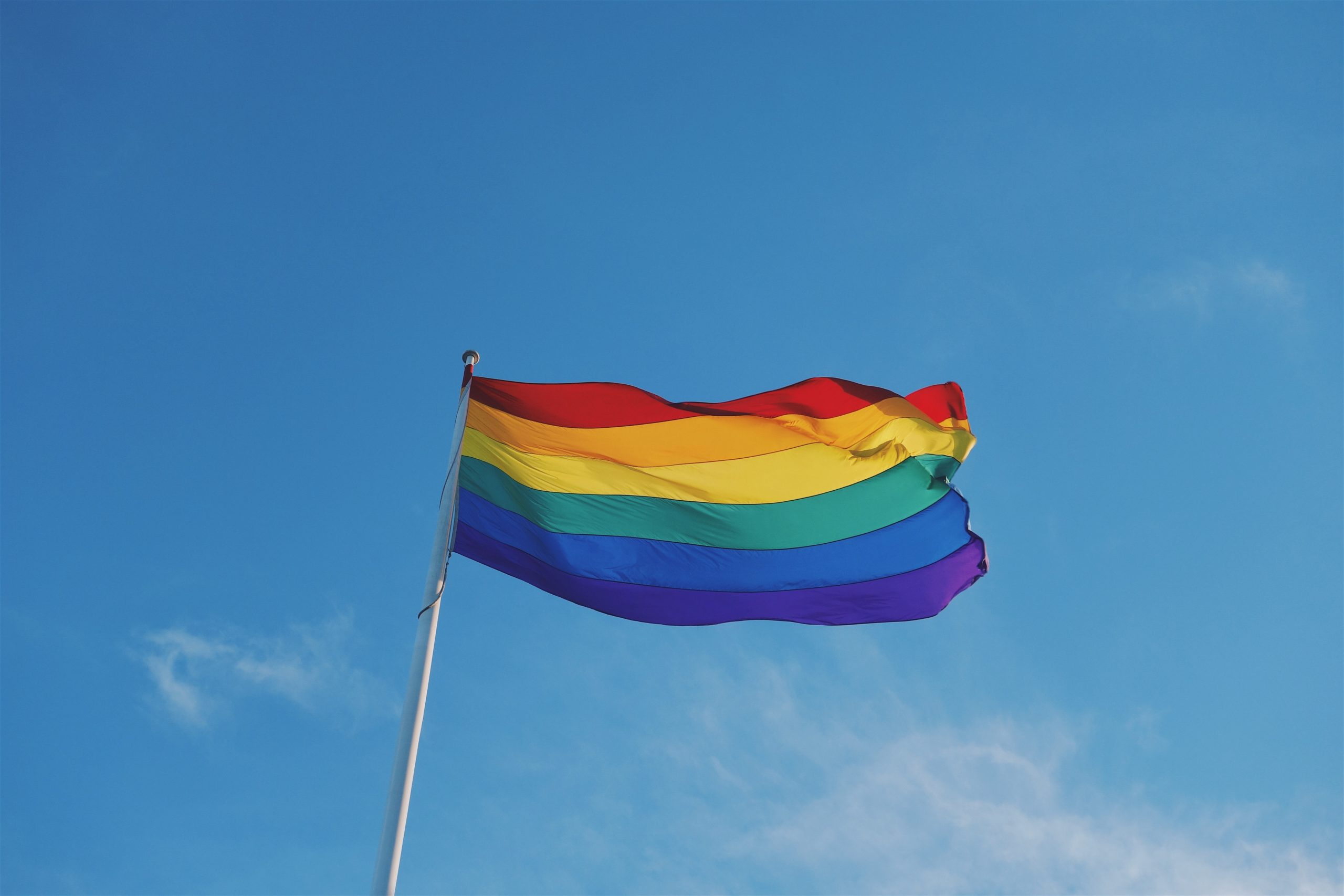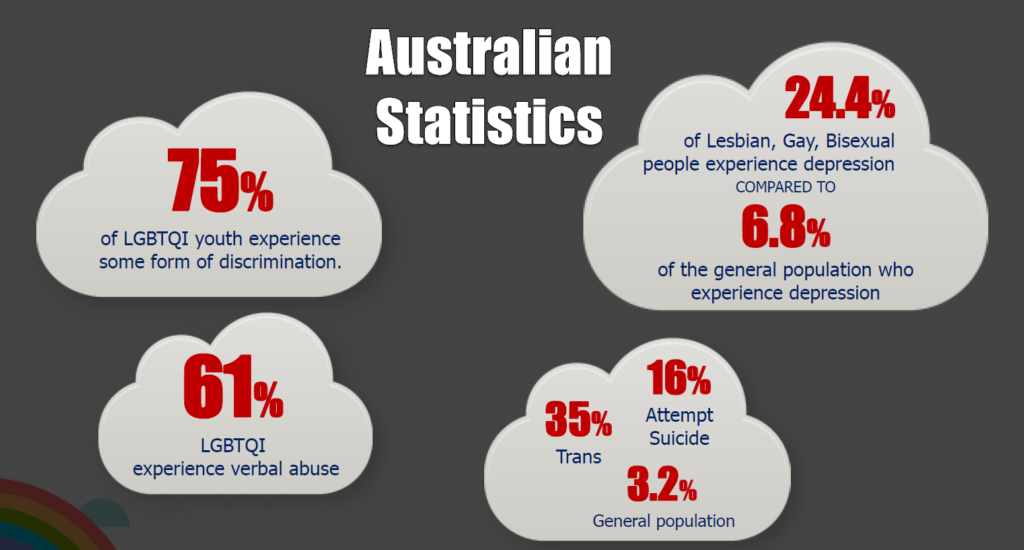Embracing diversity: Supporting international LGBTQI+ students

“Moving and studying abroad, you never know how people will react to your particular sexual orientation or gender identity, and that’s why a group like Rainbow Hub is so important. It puts to rest our concerns and gifts us with the opportunity of meeting like-minded souls, making friends and turning this daunting experience into something lighter and more enjoyable.”
– Will from Brazil studying in Brisbane
The international LGBTQI+ student body makes up 10% of the total cohort of students studying in Australia each year. However, an overwhelming theme of studies show that there is a feeling of isolation and difficulty in finding a community of support amongst these students.
(National LGBTI Health Alliance, 2016)
This evidence suggests that there needs to be much stronger community engagement and support initiatives to enhance the international LGBTQI+ student experience which creates a more inclusive environment.
According to Nelson (1999): “Some colleagues are puzzled, even perturbed, by the idea that lesbian and gay identities could have any relevance to language learning. To them, gay-friendly teaching is at best of marginal importance, of interest only to a small minority of learners and teachers (gay ones), and at worst invasive, inserting a discourse of (homo)sex into a field in which that discourse is neither relevant nor appropriate.”
The attitudes presented here demonstrate that resistance to “gay-friendly” teaching is commonplace among teachers and other ELICOS staff; the main beliefs being that it is irrelevant and/or inappropriate. This highlights to us, as managers, as disruptors and as an industry, that we need to challenge and counteract these attitudes if we are to gain more support for students in their classrooms. Teachers in particular need to be shown that LGBTQI+ issues are relevant to their students and that a discourse about homosexuality or queerness does not necessarily mean a discussion about sexual practices.
Supporting international LGBTQI+ students: The Rainbow Hub
The Rainbow Hub is a Brisbane-based group which aims to support and empower International LGBTQI+ students by raising awareness and promoting and facilitating a supportive environment for international LGBTQI+ young people in the wider Brisbane community. The group provides workshops and activities, discussion groups, LGBTQI+ resources and educational materials for well-being, and support.
How educators can foster a positive environment for LGBTQI+ students
Beyond organisations such as The Rainbow Hub which support LGBTQI+ students, educators have an important role to play in ensuring that all students feel welcomed and accepted by creating a truly inclusive environment into this amazing country, Australia.
The following are comments from students detailing how a positive environment can be fostered:
“In 2015 I was asked to prepare a presentation for my speaking test. I was interested to make a presentation about the LGBT community in Brazil, but I was afraid to “disrespect” the Saudi Arabian students. So I asked my teacher what should I do. I remember that day as Kate said to me that the subject was very interesting and I shouldn’t be afraid. Not only because Australia is a multicultural and diverse country where people must learn to respect every kind of differences, but also LGBT issues must be discussed. I was not disrespecting anybody, because speaking about LOVE is always necessary.”
– Claudio, Brazil
“As a LGBTQI student, I would like to see the messages from the allies (for example, on the boards in English schools or universities and so on). When I was young and didn’t come out, I thought no one could understand me as a transgender. From this experience, If I had seen friendly messages to LGBTQI, I would have felt that I wasn’t alone.”
– Tsukiko, Japan
“I think that when we move to a different country we are not sure how the LGBTQI+ life is. We are not sure how to behave, if it is socially acceptable. So I think that if the schools had a little flag, or messages on the board, something just to show that the queer community is safe in the environment. That is ok to say they are gay.”
– Nina, Brazil
“Well… I’ve never thought about that… I’d suggest that teachers could bring this topic into classes and reinforce that schools supports LGBTQI students.”
– Walber, Brazil
“Rainbow sign: the rainbow sign should be seen at the institution because it is easy for queers to know the attitude of the institution towards LGBTIQ society.”
– Deeann, Taiwan
“Maybe, you can have like a gay-guide: What things can you do being gay In Australia, like places, etc. What else? Make sure that everyone feels same and supported by the institution Talk about being gay freely.”
– Danilo, Colombia
How organisations can provide support for LGBTQI+ students
On an organisational level, creating a welcoming and inclusive environment is imperative for LGBTQI+ and their allies. The most visible symbol of support is the rainbow flag. Incorporating the rainbow flag into Safe Space Posters shows a commitment that the space is free from discrimination and harassment based on gender and sexual identity. No homophobic and heterosexist comments will be tolerated in the classroom, and if comments happen they will be addressed in an educational and informative manner.
The presence of the Safe Space Posters raises awareness of the differences that exist in our community and sensitises others to both subtle and overt forms of heterosexism, homophobia and transphobia.
Here is a list of other things you can do to create a more inclusive environment for LGBTQI+ students:
- provide accessible leaflets about LGBTQI groups
- celebrate International Day Against Homophobia, Transphobia and Biphobia (IDAHOBIT)
- celebrate Pride
- celebrate National Coming Out Day
- consider whether the teaching material is inclusive of the LGBTQI+ community.
Louise Kane and Tegan McCarthy presented their presentation on this topic at the English Australia conference this year. You can access the PowerPoint slides from the presentation here.
For more information about Rainbow Hub visit their website.
References
- National LGBTI Health Alliance. (2016). The statistics at a glance: The mental health of lesbian, gay, bisexual, transgender and intersex people in Australia. Retrieved from https://lgbtihealth.org.au/statistics/
- Nelson, C. (1999). Sexual identities in ESL: Queer theory and classroom inquiry. TESOL Quarterly, 33(3), 371-391.

